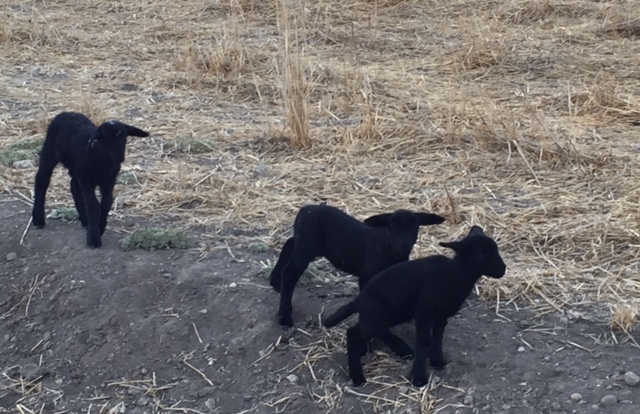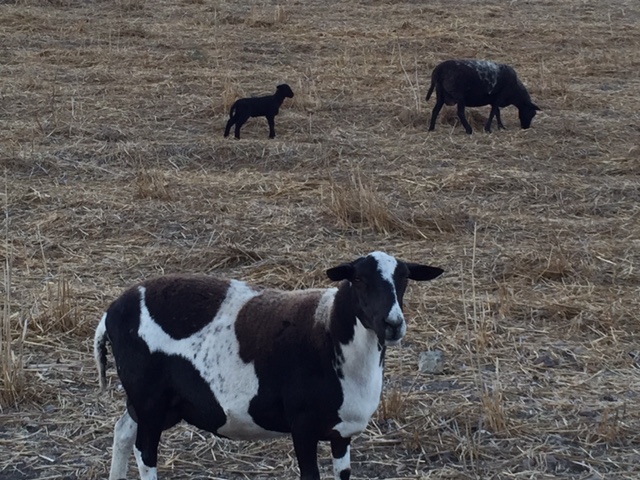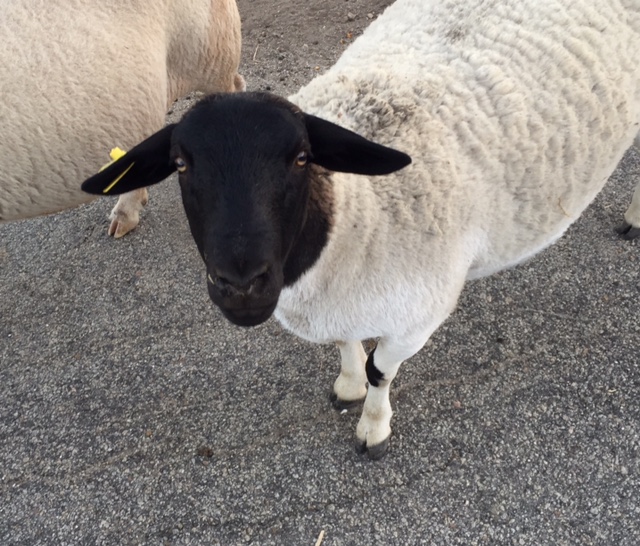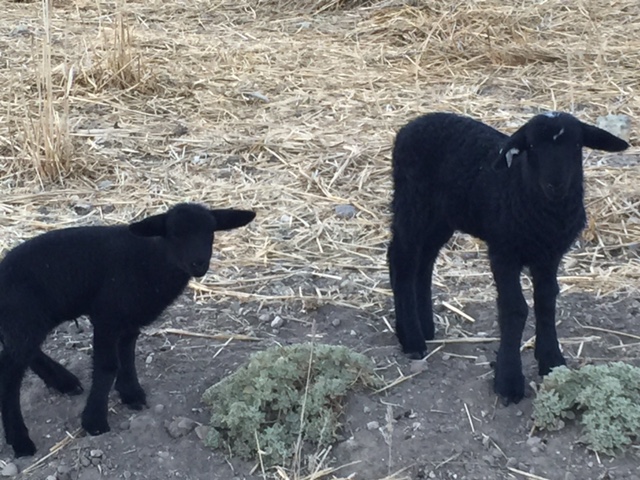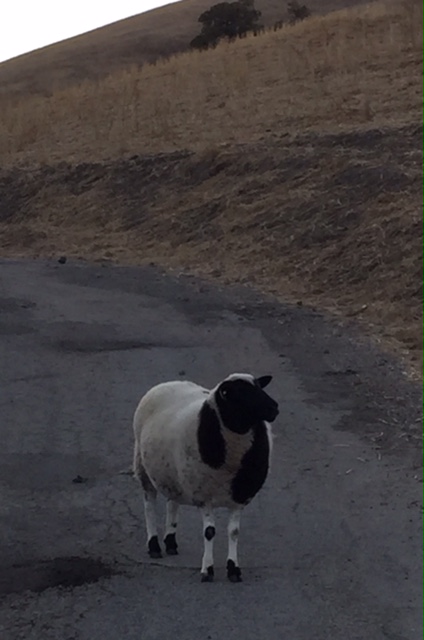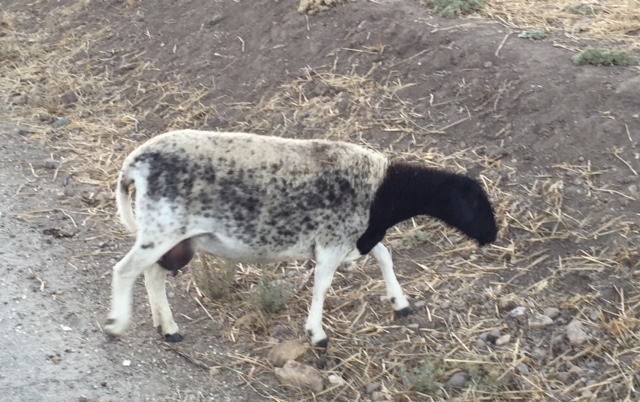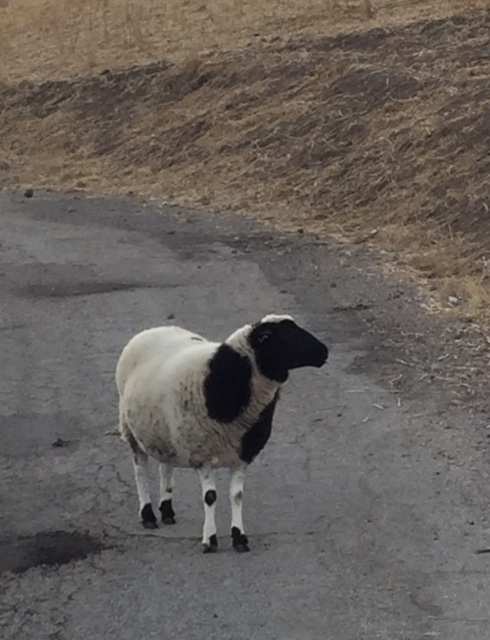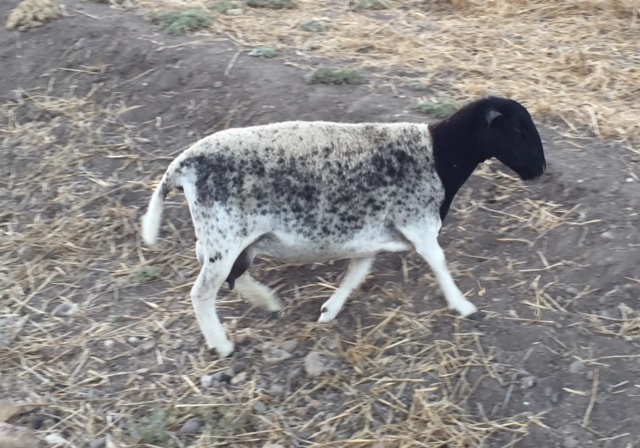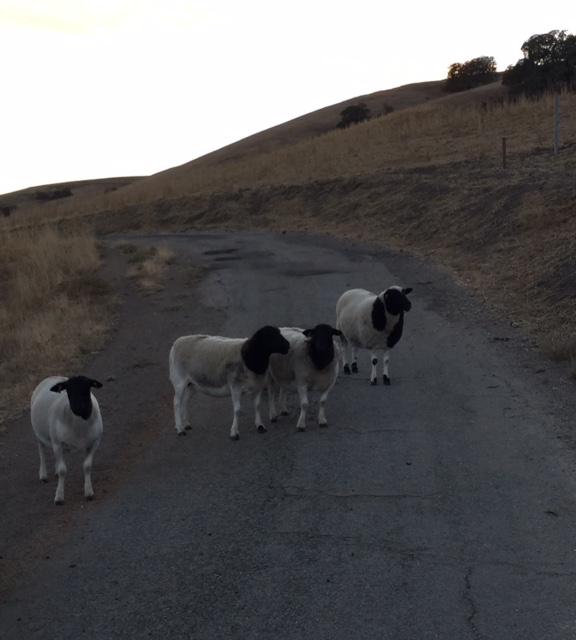Some of our lovely ladies on an evening stroll.
About the Dorper breed:
The Dorper breed was developed out of necessity. During the early 1930's, South African farmers exported a surplus of mutton and lamb, from the fat tailed indigenous breeds, to London's prestigious Smithfield Market. The carcasses were rejected because the European consumers were accustomed to the high quality New Zealand Canterbury lamb.
The South African Meat Board took on the challenge of
producing a meat sheep breed that would produce a higher quality carcass and yet, thrive under arid to semi-arid conditions.
A breeding project was finalized in 1946 and the Dorper earned a prominent place in the history of South African agriculture. In 1950, the South African Dorper Breeders' Association was formed.
According to Dr. Q. Campbell in his book "Making Money with Mutton Sheep", "One of the most successful crosses of exotic rams bred to adapted ewes proved to be the Dorset Horn X the Blackhead Persian".
The Blackhead Persian sheep, a hardy, fat-tailed desert breed from Arabia, brings to the Dorper its hardiness, thriftiness, adaptability, pigmentation and hair covering. It also brings remarkable fertility, with the ability to breed every eight months and to produce a high number of twins. In addition, the Persians have very valuable skins used in the production of fine leather products. The Dorset Horn rams crossed with Blackhead Persian ewes produced fast growing and heavily muscled lambs yielding very satisfactory economic returns under a variety of environmental conditions. The Dorper ewes from this cross were excellent mothers that could be bred in any season.
In the early 1950's, a controversy arose concerning black markings vs. a pure white sheep. Some breeders preferred a white sheep, called the Dorsian, while others chose to select for confirmation rather than color and use the black markings as their trademark. In 1964, the controversy was settled when the blackhead and white Dorper breeders united into one association calling the black head sheep Dorpers and with the unmarked being called White Dorpers.
The modern day Dorper is numerically the second largest breed in South Africa with over 10 million head (over 1/3 of the total number of sheep). In recent years, the Dorper has become popular in the Middle East, China, Canada, Australia, South America, Mexico and the United States, where it is among the fastest growing breeds.



